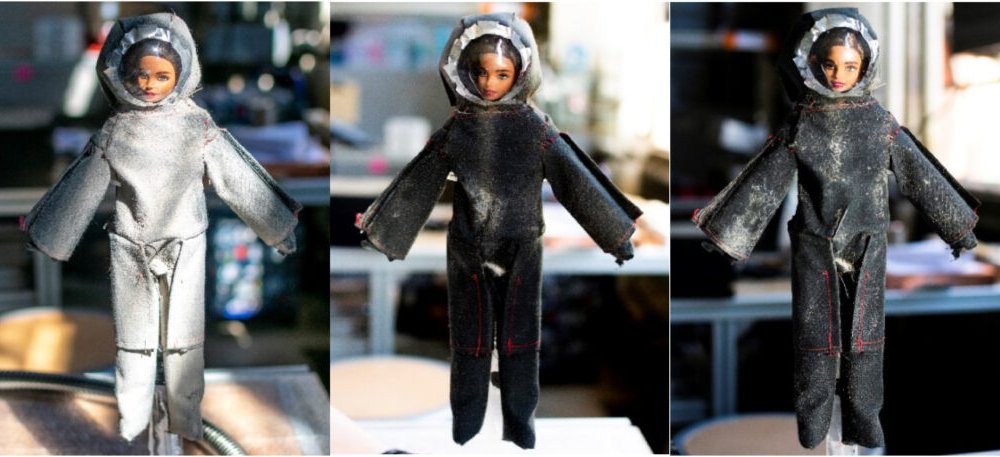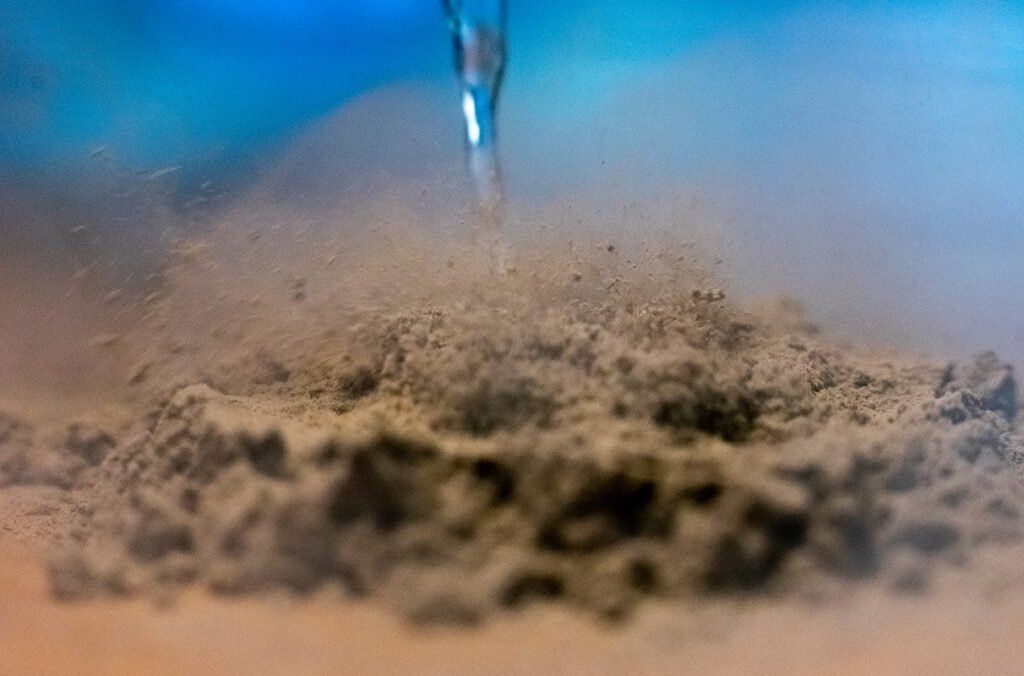NASA’s Moon Dust Problem Might Finally Have a Solution
Researchers sprayed liquid nitrogen at spacesuit-clad Barbie dolls to test their novel idea

Figuring out how to land humans on the moon was a challenge, but the six Apollo crews who achieved this aim encountered another perplexing problem once they arrived: moon dust. The tiny, electrostatically charged particles made of crushed lunar rock clung to every surface, from spacesuits to electronics, and even infiltrated the astronauts’ lungs. Crews tried using a brush or their hands to sweep the sharp, abrasive dust off their spacesuits, but neither method proved very effective.
Now, as NASA once again prepares to send humans to the moon with the Artemis program, researchers at Washington State University say they’ve come up with a promising solution to the dust issue. In laboratory experiments, they effectively removed dust from surfaces using pressurized liquid nitrogen, according to a new paper published in February in the journal Acta Astronautica.
To see whether liquid nitrogen—typically used as coolant—might be up to the task of removing moon dust, the scientists created miniature, replica spacesuits and placed them on Barbie dolls. Then, they coated the suits with volcanic ash from Mount St. Helens and other substances meant to imitate lunar dust. After placing the dolls in a vacuum chamber, they used a sprayer full of pressurized liquid nitrogen to blast away the particles.
In 233 total tests on 26 simulated spacesuits, the pressurized liquid nitrogen removed more than 98 percent of the moon dust substitute. Perhaps even more exciting is that the technique caused little damage to the spacesuits. This is important because “traditional spacesuit cleaning methods, such as brushing and vacuuming, have limited effectiveness and introduce suit fabric abrasion,” the researchers write in the paper.
The mechanism at play is known as the Leidenfrost Effect, in which a liquid droplet hovers over a very hot surface, rather than making contact with it. This happens, for example, when a chef pours cold water into a very hot pan—rather than coating the bottom, the water beads up and skitters across the surface. The researchers say the same thing occurred when they sprayed cold liquid nitrogen onto the warmer spacesuits: The nitrogen encapsulated the dust particles in droplets, then floated away.
This relatively gentle method can be used 75 times without causing damage to the suit, writes Space.com’s Elizabeth Howell. A brush, for comparison, damages a spacesuit with just one use.
Though the initial findings are promising, they represent only a first step toward implementing the technique on future lunar landings. For one, the researchers tested the liquid nitrogen on Earth, which has much stronger gravity than the moon. Astronauts would also face logistical challenges bringing pressured liquid nitrogen aboard a spacecraft.
Even so, NASA is eager to come up with a solution to the moon dust problem and wants to collaborate with partners that might be able to help. In 2019, the space agency launched the Lunar Surface Innovation Initiative to develop new technologies that could support astronauts and vehicles that land on the moon—and dust is one of its key areas of focus. Staff working on the initiative are considering “active and passive mitigation technologies for different exploration systems, like rovers, power systems, spacesuits and other surface hardware exposed to dust,” according to NASA.

NASA engineers have been testing some ideas, including slippery coatings to prevent dust from sticking to surfaces in the first place and electrostatic devices to repel particles. They’re also considering using waves of ultrasonic energy to remove dust. In the end, they may need to use all of these techniques—and then some—to protect the materials astronauts bring to space and finally vanquish their pesky lunar dust foe.
“There’s not going to be one solution,” said Sharon Miller, who is leading NASA’s dust-mitigation efforts, to Wired’s Eric Niiler in 2021. “For every material that you need to have up there, we’ll have to do something different.”

